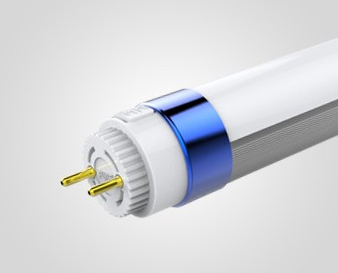2023-01-04
LED tube, in varying lengths from 2–8 feet, are commonly used for office lighting and can replace fluorescent lights in both parabolic and indirect light fixtures. They work best in climate-controlled areas with standard ceiling heights, including storage areas, fabrication floors, and mechanic garages. Sold individually or by the case for added convenience, LED tubes are an energy-efficient replacement for fluorescent tubes. With their reduced wattage need and long lifespan of up to 100,000 hours, LED tubes also boast better color rendering. They turn on to full brightness much faster than the fluorescents, and they won't flicker.

When switching from fluorescent to LED, don't get too caught up on wattage equivalent. Look instead at the number of lumens produced by the LED tube and consider the height of your fixture. For offices, retail spaces, hospitality, and applications with similar a ceiling height, 4 ft. tubes with 1800 lumens or fewer are the most popular. You don't want to overwhelm a space and make customers or employees feel like they are sitting in an interrogation room. For taller ceilings that use strip lights or high-bay fixtures, like hospitals, warehouses, and parking garages, LED tube lights with more than 2000 lumens offer the brightest output.
Dimmable tubes can be used in areas where adjustable brightness is desired. For added durability in food service applications, look for LED tubes with a shatter-resistant coating that meets NSF/ANSI requirements. LED tubes that are DLC-certified have been tested to meet strict efficiency standards and may provide additional energy savings with state or local rebates.
Ratings and certifications indicate the kinds of conditions that the tubes can be safely used in. Dry-location rated tubes should only be used indoors where the tubes will not come into any contact with water or moisture. LED tubes with a damp location rating can be used where moisture is present but should not come into direct contact with water.
Lamp Types: Plug-n-Play, Direct Wire, Hybrid, and Type C
The advanced technology of LED tubes allows for traditional direct-wire or the newer plug-and-play installation options. Plug-and-play (ballast-compatible) lamps operate with the fixture's existing fluorescent ballast, so no rewiring is necessary. Direct-wire (ballast-bypass) LED tubes operate off the line voltage directly from the sockets, so the fixture's ballast must first be bypassed and then removed. Sockets may also need to be replaced. Because fluorescent ballasts draw a small amount of electricity, direct-wire LED tubes offer more energy savings over the life of the bulb compared to plug-and-play LED tubes.
Hybrid LED tubes use either installation method—they can plug directly into the fluorescent fixture and work with a compatible ballast when first installed. Then, when the ballast expires, rewire the fixture to bypass the ballast and use the same hybrid tube.
A newer option for upgrading to LED are type C lamps. Similar to both plug-and-play and ballast bypass these, Type C lamps bypass the existing ballast and operate using an external driver instead. The driver must be purchased with the tube to ensure that they are compatible.
Depending on the manufacturer, these lights may be called type A, type B, type A/B, or type C.
Type A: These are ballast compatible (plug-and-play and hybrid) lamps, but not every LED tube will be compatible with all ballasts. Make sure to check the Ballast Compatibility PDF or spec sheet. If you have questions or concerns, call one of our lighting experts who are standing by.
Type B: Ballast-bypass (direct-wire) lamps are not ballast compatible. These tubes require the ballast be disconnected and removed from the fixture prior to installation. These lamps are wired directly to line voltage and often require non-shunted sockets, so the sockets may need to be changed at the same time. However double-ended LED tubes wired at both ends to utilize non-shunted or shunted lamp holders are available.
Type A/B: Hybrid lamps, like type A tubes, are not compatible with all ballasts. Check the Ballast Compatibility PDF or spec sheet for a full list of fluorescent ballasts that are compatible with these LED tube lights. Hybrid tubes can also be used as direct-wire tubes, making these a flexible option. Check the installation instructions or confirm with a licensed electrician if you choose to bypass the ballast.
Type C: LED driver compatible tubes. A newer take on type A and type B tubes, these lamps operate with an external LED driver instead of using the existing ballast. The driver must be purchased with the tubes to ensure compatibility. The ballast is bypassed during installation, eliminating the compatibly issues and maintenance costs typically associated with ballasts. The remote driver allows for controllable dimming with any 0-10V dimmer once installed, letting you adjust the wattage as need to increase or decrease the lumen output.